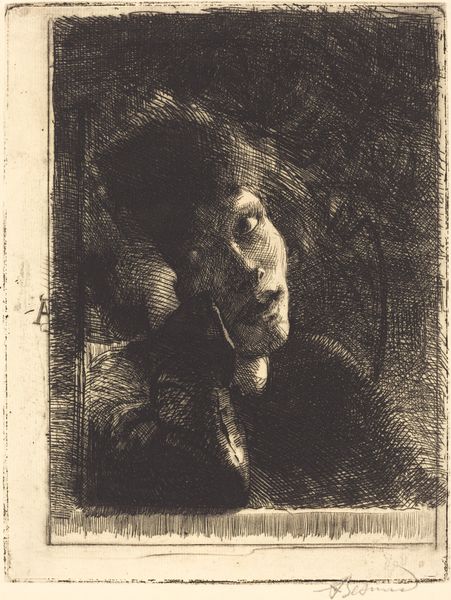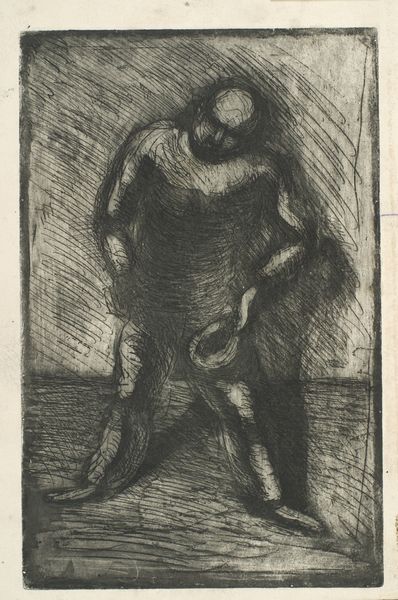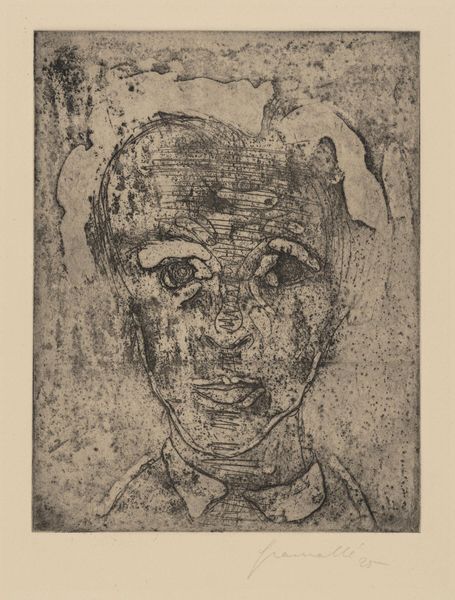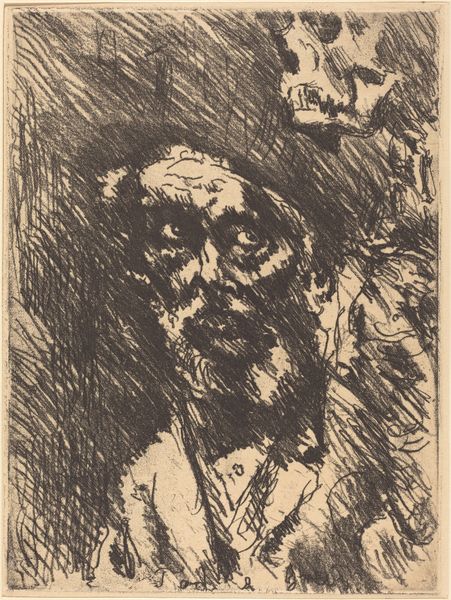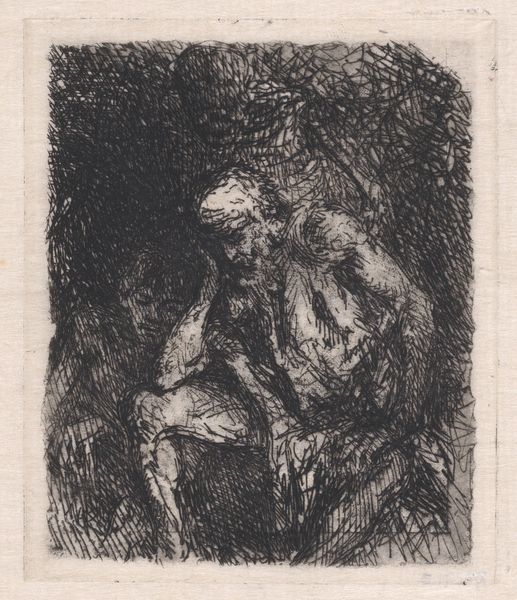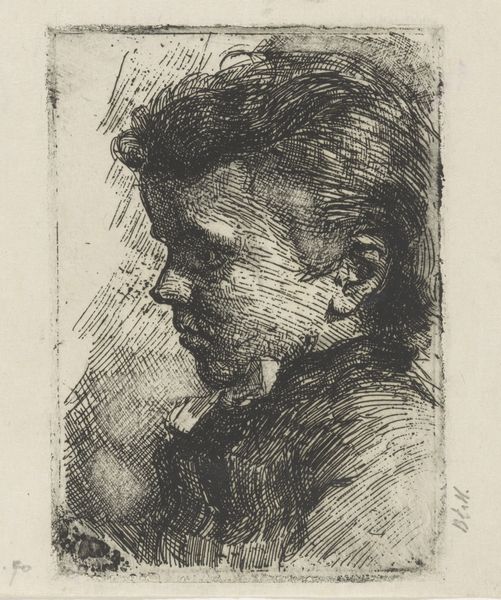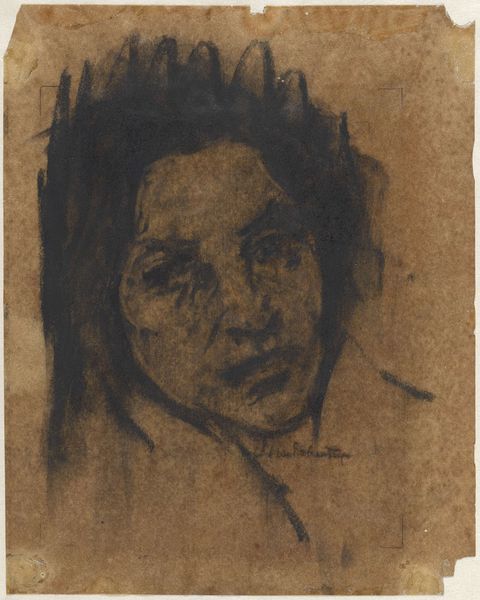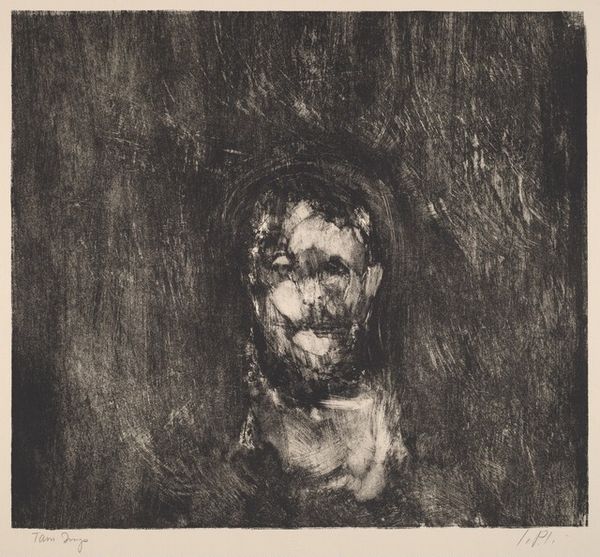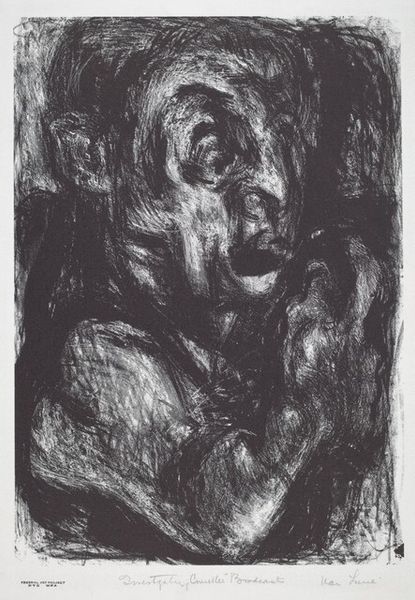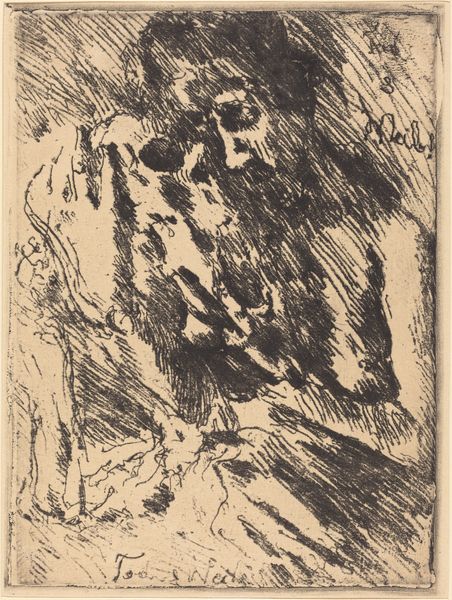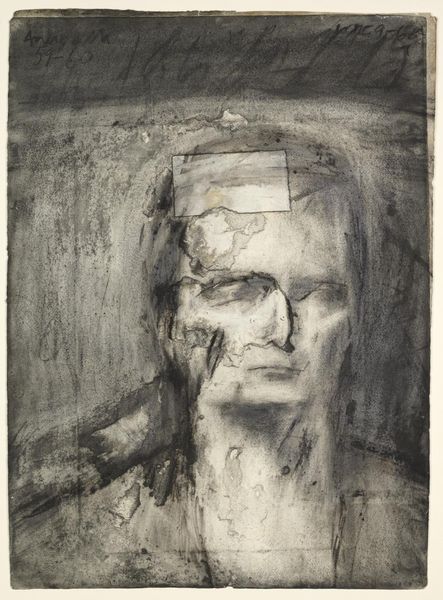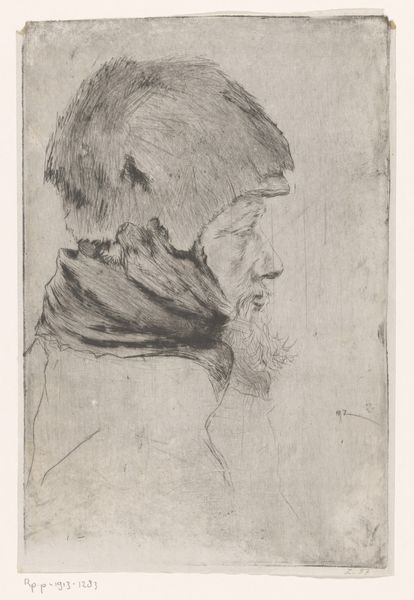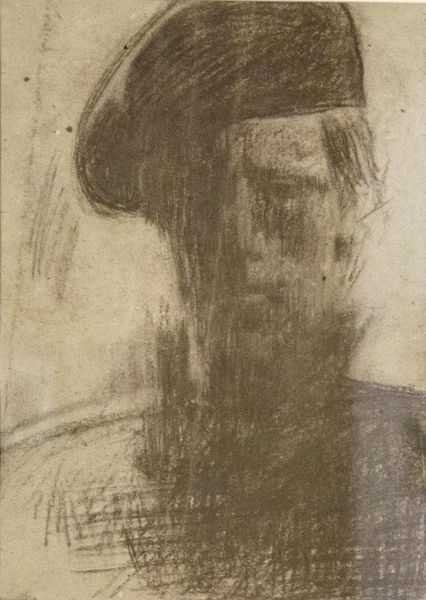
drawing, print, etching
#
portrait
#
drawing
# print
#
etching
#
pencil sketch
#
figuration
#
pencil drawing
Dimensions: plate: 13.4 × 10.8 cm (5 1/4 × 4 1/4 in.) sheet: 27.8 × 19.8 cm (10 15/16 × 7 13/16 in.)
Copyright: National Gallery of Art: CC0 1.0
Editor: Here we have Paul Cézanne's "Bust of a Girl," an etching from 1873. There's a haunting quality to this piece, with all those intense, scratchy lines. What social context do you think shaped its creation? Curator: What strikes me is how the visible labour and the act of making are foregrounded through those dense, almost frantic lines. Etching was historically linked to democratic ideals of reproducibility and distribution, offering artists like Cézanne a medium to reach wider audiences beyond the elite. What political currents do you think might have influenced Cézanne? Editor: That's interesting, I didn't know that! The rise of the Third Republic, perhaps? Maybe he was making art more accessible amidst a shift towards broader representation and social mobility? But does this work itself speak to those themes, beyond the medium? Curator: Exactly! Look at how Cézanne renders the "girl." Her gaze is direct, almost confrontational. How does that affect your understanding of her position, considering that female subjects at the time were often objectified? Think about the evolving discussions around women's roles in society during the late 19th century. Do you see the beginnings of an active agency in her portrait? Editor: That direct gaze does shift things. It suggests a kind of refusal to be passively consumed, and hints at something more complex. I see how we can read her portrait in relation to gender politics of the time. Curator: Absolutely. It is also crucial to remember that the art world then as now was gendered. How might that historical truth inflect our contemporary reception of this etching of a girl? Editor: So, seeing the artwork within a social context, makes one reflect on societal evolution in its approach to representing and respecting individuals, prompting critical engagement. I learned something new! Curator: Agreed. Bringing historical and theoretical frameworks illuminates nuances, showing how this etching invites crucial dialogue across history.
Comments
No comments
Be the first to comment and join the conversation on the ultimate creative platform.
